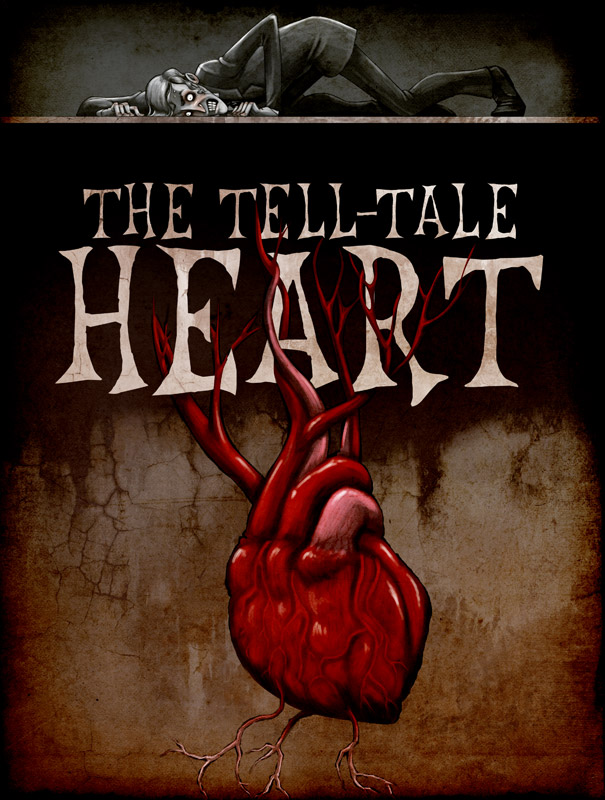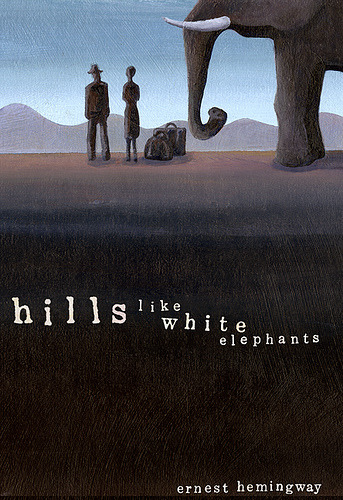The power of literature comes from its ability to explore complex ideas that are integrated into stories. To integrate these complex ideas, writers craft novels and make use of characterization, tone and a plot arc. Plot events, characters, symbols and motifs, collectively known as the content of the piece, are then interpreted by readers. These aspects are incorporated deliberately to communicate a big idea, a theme. However, a theme isn't a simple one-word message or a moral. It's far more complex than that. Motives and actions of characters create complicated situations that often cannot be interpreted with black-and-white right and wrongs. So, the author’s purpose is not to teach a lesson. Instead, his or her motive is to present one story about a larger issue. A theme is a complex idea that is explored by the author throughout a piece of writing that challenges readers to think about a topic. The themes explored in three short stories--Frank O’Connor’s “The Guests of the Nation,” Ernest Hemingway’s “Hills Like White Elephants,” and Edgar Allen Poe’s “The Tell Tale Heart”--are complicated and cause readers to think about complex ideas.
 In “The Guests of the Nation,” O’Connor examines multilayered themes that encourage readers to think about duty and loyalty. The piece portrays a narrator and his friend, both Irish Volunteers, who take two young Englishmen under their wings. However, they don’t realize that the Englishmen are hostages of the Volunteers. Before long, the four become close. When time comes for the Englishmen to be shot as reprisal, the narrator, Bonaparte, is in a difficult position. He narrates, “I had the Smith and Wesson in my pocket and I kept fingering it and wondering what I’d do if they put up a fight for it or ran, and wishing to God they’d do one or the other” (O’Connor 23). But eventually, “I knelt and fired. By this time I didn’t seem to know what I was doing” (O’Connor 25). O’Connor’s writing raises questions about loyalty, whether it’s loyalty to a country or a friend. Because of the guilt of shooting someone he genuinely cares about, Bonaparte “...never felt the same about [anything] again” (O’Connor 26). At the same time, he has an obligation to carry out his rightful duty to his country. Maybe this sacrifice is worth it to accomplish the larger goal of Irish independence. Or maybe Bonaparte is a coward for abandoning a friend in a time of need. O’Connor’s short story doesn’t explicitly tell readers whether Bonaparte makes the right decision or not. In other words, it doesn’t tell a moral about which loyalty should come first. On the contrary, it challenges readers to carefully consider Bonaparte’s situation and think about the complexity of what it means to do one’s rightful duty. The exploration of a complicated idea throughout a piece of writing is used by O’Connor and other writers alike.
In “The Guests of the Nation,” O’Connor examines multilayered themes that encourage readers to think about duty and loyalty. The piece portrays a narrator and his friend, both Irish Volunteers, who take two young Englishmen under their wings. However, they don’t realize that the Englishmen are hostages of the Volunteers. Before long, the four become close. When time comes for the Englishmen to be shot as reprisal, the narrator, Bonaparte, is in a difficult position. He narrates, “I had the Smith and Wesson in my pocket and I kept fingering it and wondering what I’d do if they put up a fight for it or ran, and wishing to God they’d do one or the other” (O’Connor 23). But eventually, “I knelt and fired. By this time I didn’t seem to know what I was doing” (O’Connor 25). O’Connor’s writing raises questions about loyalty, whether it’s loyalty to a country or a friend. Because of the guilt of shooting someone he genuinely cares about, Bonaparte “...never felt the same about [anything] again” (O’Connor 26). At the same time, he has an obligation to carry out his rightful duty to his country. Maybe this sacrifice is worth it to accomplish the larger goal of Irish independence. Or maybe Bonaparte is a coward for abandoning a friend in a time of need. O’Connor’s short story doesn’t explicitly tell readers whether Bonaparte makes the right decision or not. In other words, it doesn’t tell a moral about which loyalty should come first. On the contrary, it challenges readers to carefully consider Bonaparte’s situation and think about the complexity of what it means to do one’s rightful duty. The exploration of a complicated idea throughout a piece of writing is used by O’Connor and other writers alike.
Hemingway’s “Hills Like White Elephants” includes complex themes as well. A traveling couple stops and converses at a valley in Spain while waiting for the train to Madrid. It can be inferred that the female is pregnant, and the male coaxes her into getting an abortion. The dynamic between the two characters is tangled. Hemingway introduces them as “the American and the girl with him” (Hemingway 48), and throughout the piece, they are referred to as “the man” and “the girl,” possibly insinuating that the man has more power in the relationship. Furthermore, the man can be smooth--not overly pushy, but still insistent. Hemingway writes, “‘Well,’ the man said, ‘if you don’t want to you don’t have to. I wouldn’t have you do it if you didn’t want to. But I know it’s perfectly simple’” (Hemingway 49). At the same time, he isn’t mean. He could be genuinely looking out for her best interests, which is illustrated when he says, “I’ll go with you and I’ll stay with you all the time” (Hemingway 49). “Hills Like White Elephants” doesn’t make clear what exactly the power dynamic is. Instead, readers are challenged to think about each character’s intentions and decisions, which point towards the theme of the entangled nature of the relationship between the man and girl. “Hills Like White Elephants” is one of many stories that portrays a convoluted theme.
 The themes explored in Poe’s “The Tell Tale Heart” are also complicated. The narrator is a trusted servant who has a mental illness. One day, the idea of murdering his master occurs to him. This thought haunts him until one night, he acts on it. However, even though he’s a murderer, the servant is portrayed to be slightly sympathetic. The servant demonstrates that he has, or at least had, a kind heart, narrating, “I loved the old man. He had never wronged me. He had never given me insult” (Poe 79). Furthermore, he’s clearly ill, thinking, “True!--nervous--very, very dreadfully nervous I had been and am! But why will you say that I am mad? The disease had sharpened my senses--not destroyed--not dulled them” (Poe 79). This raises questions about whether or not he should be held accountable for his actions. Originally a faithful, appreciative servant, he is overcome by a mental illness that skews his thoughts and judgement. So, one the one hand, it isn’t his fault; his actions are merely a product of his disease. On the other hand, he murders innocent man, which is a severe crime. If he isn’t responsible, who is? Poe leaves it up to readers to consider the complexities of the theme of accountability among mentally ill people. There isn’t a black-and-white answer, and it wasn’t Poe’s purpose to provide one. Rather, this theme was introduced to ask readers to put themselves in the narrator’s shoes and consider both sides to the story, a powerful technique that is used by many writers.
The themes explored in Poe’s “The Tell Tale Heart” are also complicated. The narrator is a trusted servant who has a mental illness. One day, the idea of murdering his master occurs to him. This thought haunts him until one night, he acts on it. However, even though he’s a murderer, the servant is portrayed to be slightly sympathetic. The servant demonstrates that he has, or at least had, a kind heart, narrating, “I loved the old man. He had never wronged me. He had never given me insult” (Poe 79). Furthermore, he’s clearly ill, thinking, “True!--nervous--very, very dreadfully nervous I had been and am! But why will you say that I am mad? The disease had sharpened my senses--not destroyed--not dulled them” (Poe 79). This raises questions about whether or not he should be held accountable for his actions. Originally a faithful, appreciative servant, he is overcome by a mental illness that skews his thoughts and judgement. So, one the one hand, it isn’t his fault; his actions are merely a product of his disease. On the other hand, he murders innocent man, which is a severe crime. If he isn’t responsible, who is? Poe leaves it up to readers to consider the complexities of the theme of accountability among mentally ill people. There isn’t a black-and-white answer, and it wasn’t Poe’s purpose to provide one. Rather, this theme was introduced to ask readers to put themselves in the narrator’s shoes and consider both sides to the story, a powerful technique that is used by many writers.
Works of literature consist of various elements that are intentionally woven together to illustrate an intricate big idea, or a theme. These themes are not neat and tidy morals but instead are multilayered concepts, as exemplified by O’Connor’s “The Guests of the Nation,” Hemingway’s “Hills Like White Elephants” and Poe’s “The Tell Tale Heart.” The complexity of a theme incites thinking, starts conversations among readers, and leads to the exchanging of ideas. Thus, the theme is a powerful aspect of literature that has the ability to communicate ideas and broaden readers’ horizons of thinking.

No comments:
Post a Comment